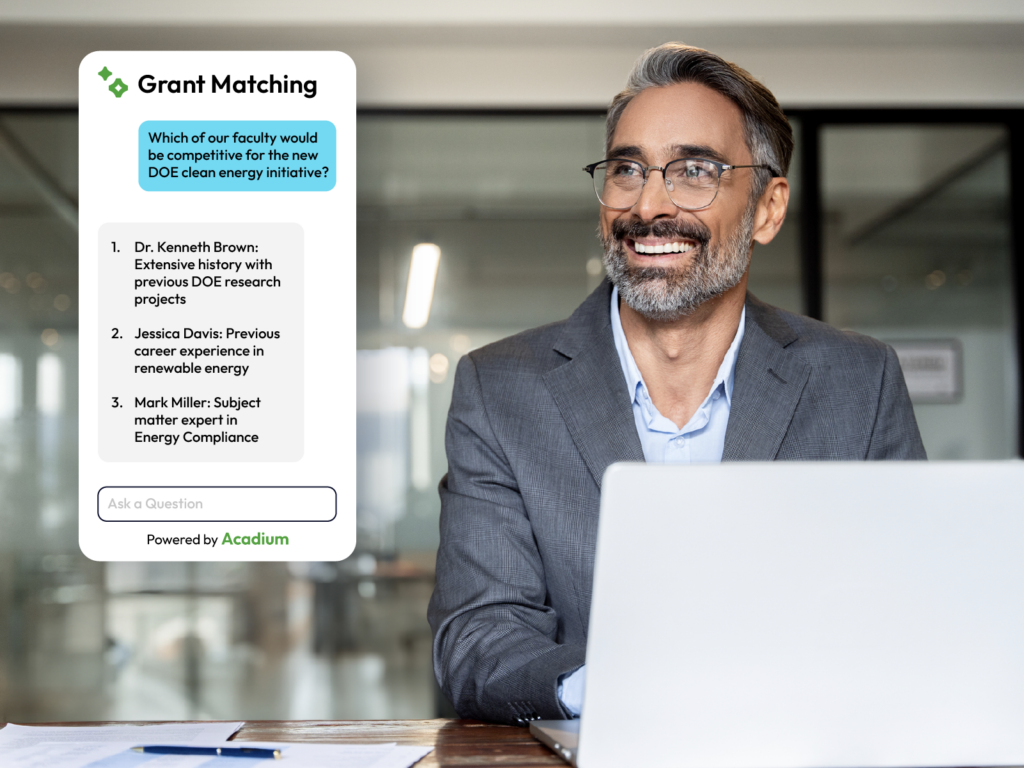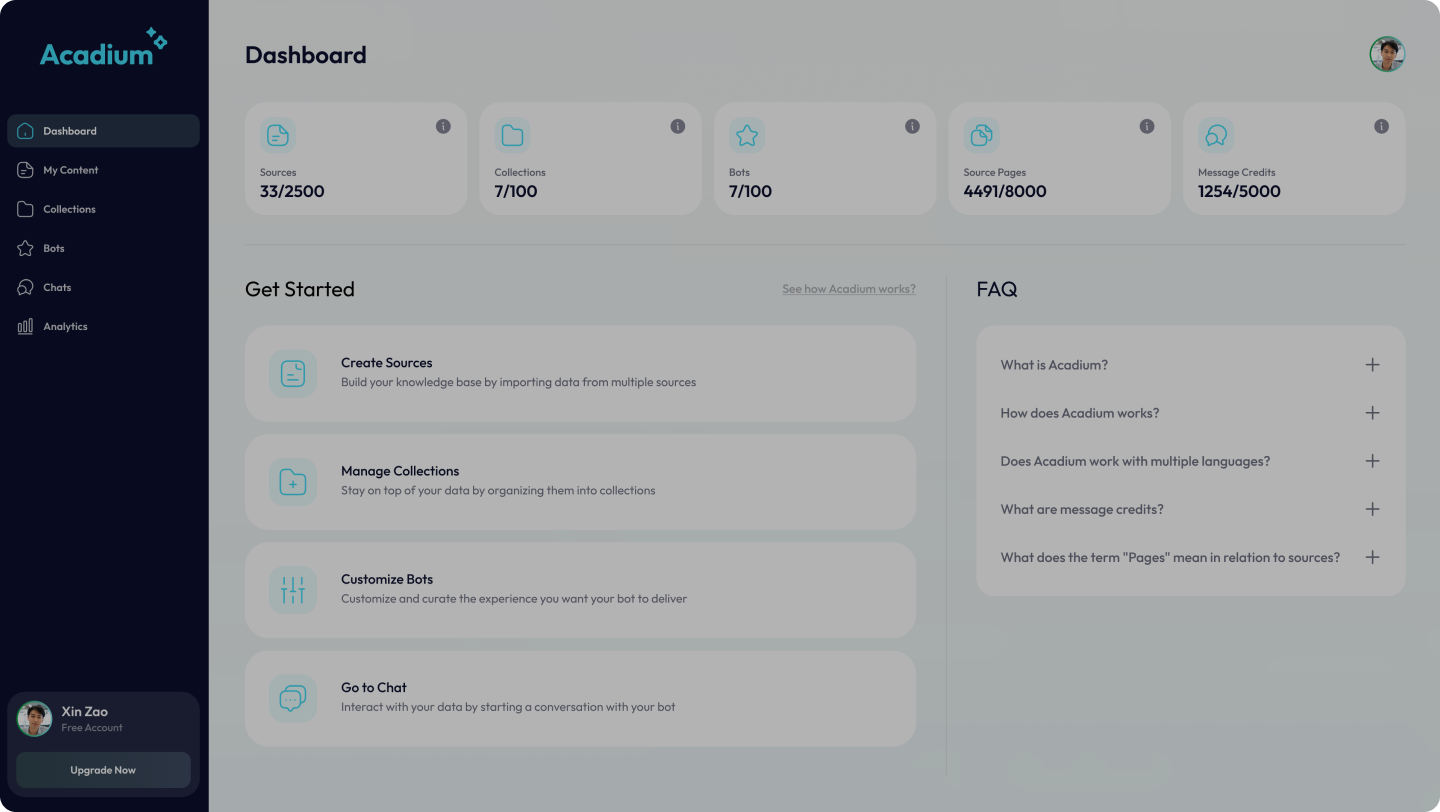Securing research funding has become increasingly challenging as faculty face the daunting task of identifying suitable grant opportunities among thousands of potential options, and then crafting compelling applications that align perfectly with funders’ priorities. This process traditionally requires countless hours of searching, analyzing, and writing—time that could otherwise be dedicated to actual research. Enter Acadium, an innovative AI platform that is transforming how universities approach the grant funding process.
The Grant Funding Challenge
Research institutions face several critical challenges when pursuing grant funding:
Research faculty spend an estimated 30-40% of their time on administrative tasks rather than conducting actual research, with grant identification and application processes consuming a significant portion of this time. The average grant application success rate hovers around 20% across disciplines, meaning researchers invest substantial effort in applications that ultimately go unfunded.
Keeping track of ever-changing funding opportunities, deadlines, and specific requirements across multiple agencies and foundations requires dedicated resources that many departments simply don’t have. Meanwhile, competition for limited funding continues to intensify, with federal research budgets remaining relatively flat while the number of researchers and applications increases.
How Acadium Transforms the Grant Funding Process
Acadium’s AI-powered platform offers a revolutionary approach to research funding by creating a customized grant opportunity matching system that can dramatically improve efficiency and success rates.

Step 1: Building Your Grant Knowledge Base
The foundation of an effective grant-matching system begins with importing comprehensive information about your institution’s research strengths and past funding success. A research office would upload:
- Faculty research profiles and publication records
- Previous successful grant applications and their outcomes
- Institutional research priorities and strategic plans
- Subject matter expertise areas and specialized equipment
Acadium accepts multiple file-formats including PDFs, Word documents, spreadsheets, and even web links—making it simple to incorporate diverse information sources into a unified knowledge base.
Step 2: Creating a Grant Opportunity Collection
Next, research administrators would compile a comprehensive collection of funding sources. This might include:
- Federal agency funding announcements (NIH, NSF, DOE, DOD, etc.)
- Foundation grant opportunities
- Industry-specific grant programs
By regularly updating this collection with new opportunities, Acadium maintains a current database of potential funding sources that forms the basis for its matching capabilities.
Step 3: Designing Your Grant Matching Assistant
With both research profiles and funding opportunities loaded, administrators can now configure an Acadium-powered grant matching assistant. This custom AI tool will:
- Compare opportunity requirements against researcher expertise
- Score potential matches based on alignment with institutional strengths
- Flag upcoming deadlines and provide application timeline guidance
The assistant’s communication style can be customized to match your institution’s culture—whether formal and data-driven or conversational and encouraging.
Step 4: Implementing Your Grant Opportunity System
Once configured, your Acadium grant matching system becomes an invaluable resource for faculty and research staff. Researchers can interact with the system to:
- Query the system about specific research funding needs
- Request assistance with preliminary proposal development
- Obtain guidance on addressing specific sections of applications
Real-World Applications for Research Funding
Let’s explore how different stakeholders might leverage this Acadium-powered system:
Scenario 1: The Interdisciplinary Team
A biomedical engineer seeking to collaborate with data scientists and clinicians asks: “Are there grants supporting AI applications in personalized medicine?” The system not only identifies relevant NIH and foundation opportunities but also suggests potential collaborators within the institution who have complementary expertise and successful funding histories.
Scenario 2: The Research Administrator
A department research manager asks: “Which of our faculty would be competitive for the new DOE clean energy initiative?” The Acadium assistant analyzes the announcement against all faculty profiles and produces a ranked list of potential applicants, along with specific strengths that align with the program priorities.
Scenario 3: The Application Development Process
A professor preparing an NSF application asks: “What successful strategies have our university researchers used when addressing broader impacts?” The assistant synthesizes approaches from previously funded applications, providing specific examples that have resonated with reviewers.
A Transformative Tool for Research Development
The Acadium grant opportunity matching system represents a paradigm shift in how institutions approach research funding. By leveraging AI to match researcher strengths with funding opportunities, this system addresses one of the most significant pain points in academic research: efficiently identifying and securing appropriate funding. By enabling researchers to focus more on their science and less on administrative tasks, our AI-powered solution helps fulfill Acadium’s core mission of transforming higher education through intelligent technology. Contact us today to learn more.











